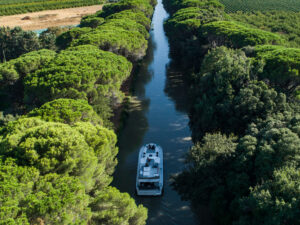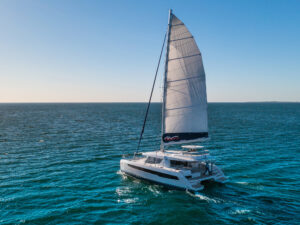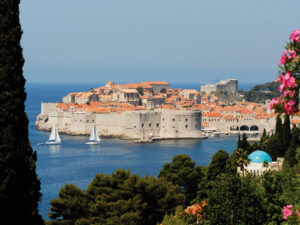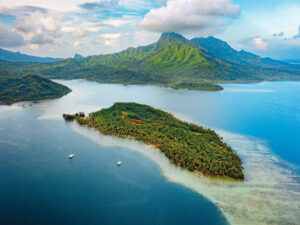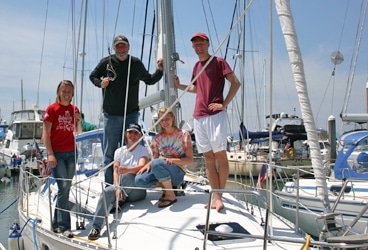
keiper family
I was adrift on the high seas of cyberspace.Building a sweat hunting for sailors eager to share stories of their transition from white-knucklers to successful first-time bareboat charterers, I stumbled on something a bit off-message, but fun nonetheless.
The gem came from Jermaine Larson of San Juan Sailing, a charter company and school out of Bellingham, Washington.
Jermaine urged me to interview former students Tim and Christine Keiper, who’d gained their charter certification via the American Sailing Association (www.american-sailing.com) curriculum that San Juan Sailing teaches. “They have also just done some sailing off of Zanzibar Island,” Jermaine wrote.
Zanzibar? Let me check my charter files-nope, I’ve never heard of any charter bases at this destination off the coast of Tanzania, the largest country in East Africa. The Zanzibar islands, a former British protectorate, have been a part of Tanzania since 1964; on occasion, bluewater voyagers have sailed there and shared their discoveries in the pages of Cruising World.
But the Keipers aren’t in this part of the world looking for a charter base-they’re temporarily working there.
Tim is spending an academic year as a Fulbright Scholar, on temporary leave as an assistant professor at Western Washington University here in Bellingham. Christine is an interpreter for the hearing impaired.
Here’s what she told me about their adventure aboard the dhow known as the n’garawa.
“There’s such an interesting mix of cultures and eras in this part of the world,” Christine writes. “Next to elaborate yachts you’ll see hand hewn boats that are still used by the locals. My husband arranged with a local fisherman to give us a ride in his n’garawa, a canoe shaped boat, hand hewn from mango wood. It has an outrigger on each side, a sail, and poles to navigate in more shallow waters. It’s a beautiful sight every morning and evening to see a fleet of n’garawas sailing out and in with the tides. Other than a little bit of water that seeps in now and then, the boats are very seaworthy and the men are very skilled in the art of sailing them.
“Tim arranged with a local fisherman to take us for a mini cruise in his boat. I sat nestled down in the middle, bailed a bit (if I know anything about sailing it’s where the water should be) and recorded the adventure for posterity. Tim assisted in hoisting the sail, tacking, and then took a turn at the rudder, which he said was very responsive. For me, I was fully satisfied tucked within that mango tree, trailing my hand in the clear blue-green of the Indian Ocean, and trying to imagine myself back when this was the only type of vessel to be found in these waters.
“Zanzibar has a checkered past when it comes to sailing vessels. At one time it served as a main slave holding area during the years of Arab slave trading until the British forced an end to it. Now a fairly steady stream of tourism is a main source of income encouraged by the beaches, the good dives at the coral reef, the spice farms, and picturesque Stone Town.”
So there you have it: from ASA courses and a couple of bareboat charters in the Pacific Northwest of North America to the Spice Islands of the Indian Ocean. Look for more inspiring tales of new sailors showing their mettle on bareboat charter in the February 2011 issue of Cruising World.

